Nearly 1,500 people came to our 18th Annual Labor Day Open House and Sweet Sorghum Festival yesterday. Here is a photo-essay of the event along with a description of a few of the activities.
Making Sorghum Syrup
Beginning at 3:30 a.m., about a dozen young men began harnessing mules. Using hay wagons, they hauled sorghum canes, which they had cut and loaded the prior day, up to the sorghum press.
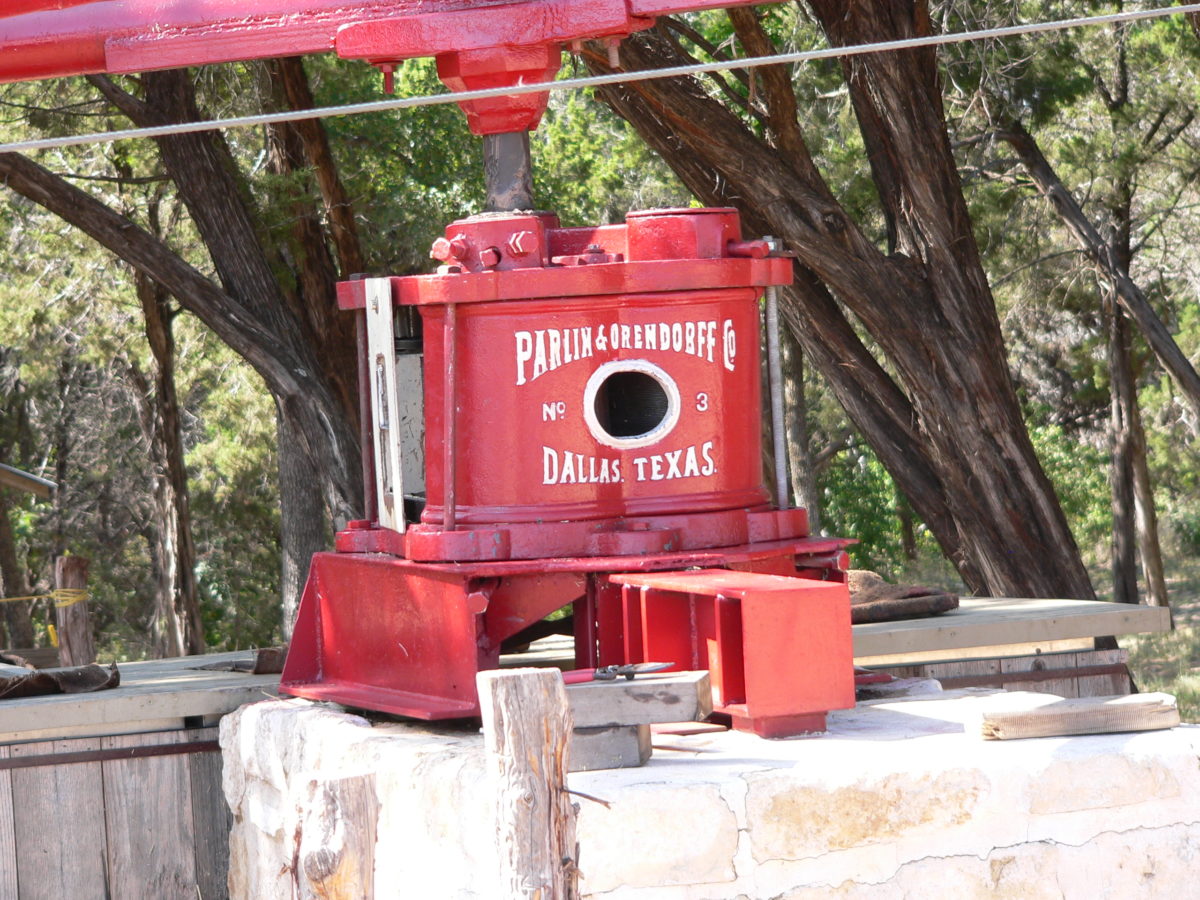
This sorghum press is considered a “third generation” press, based on its design. It was originally built in the late 1800’s or the early 1900’s. The press, or mill, as it is also called, is powered by a team of mules. The long boom to which the mules are hitched turns several vertically-mounted rollers within the press. Young men feed sorghum canes, a few at a time, into the press. The rollers pull the canes into and through the press, crushing them and releasing the sap. The sap drains into one of three stainless steel holding tanks adjacent to the press, while the “chews” (the crushed canes) are slowly ejected out of the press.
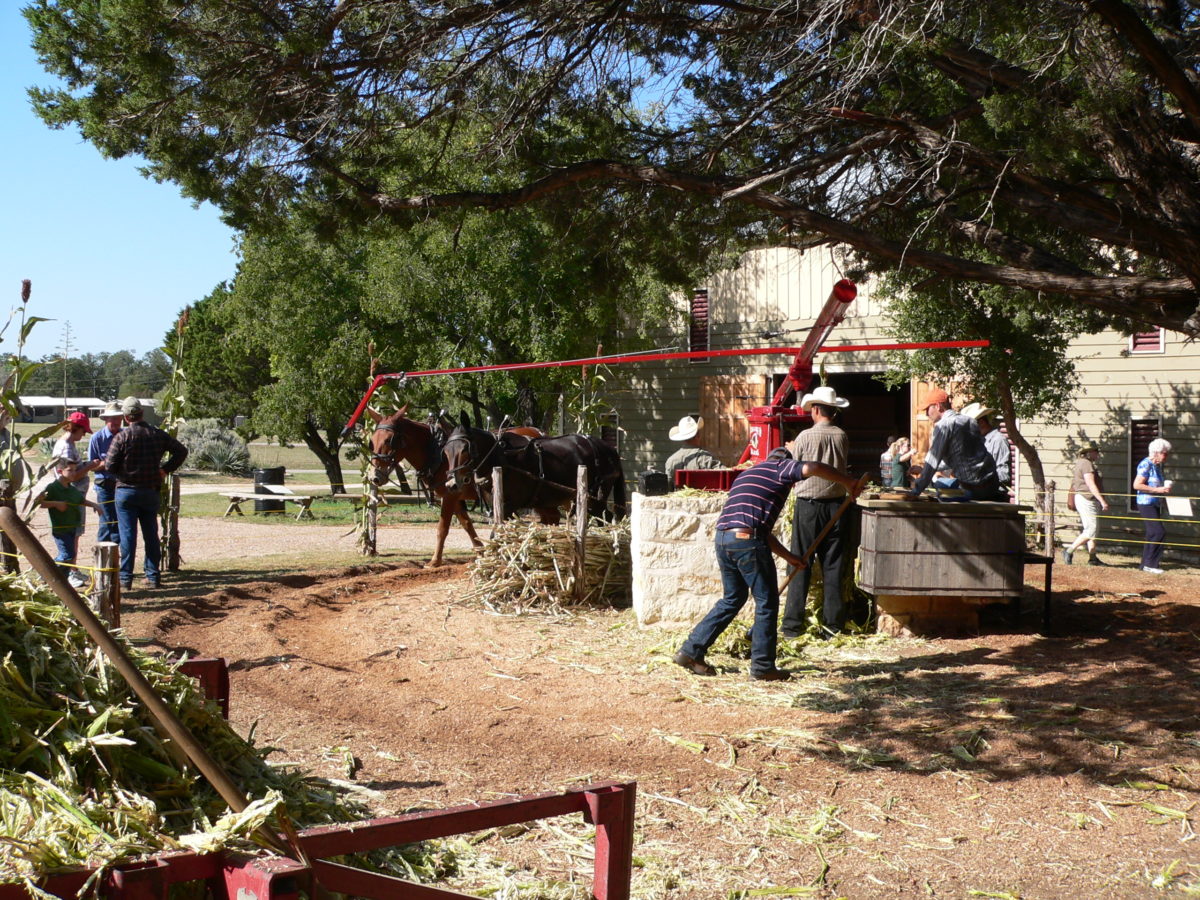
After filling a holding tank, we let the sorghum sap settle for about two hours before processing it further. Having three tanks lets us fill one tank, while sap in the second tank settles, and while sap in the third tank is slowly piped downhill to a wood-fired copper cooking tray, where it is cooked into syrup.
The cooking tray is essentially a large, flat rectangular pan, partitioned with metal baffles every few inches in an alternating pattern. Sorghum sap is gravity fed through a pipe slowly and continuously into the near end of the cooking tray.
A wood fire beneath the tray heats and boils the sap, while it is guided slowly through the tray. As you can see from the steam, a lot of water is boiled off during the cooking process, and by the time the liquid reaches the far end of the tray, it has been distilled into syrup, which occupies about one-tenth it’s original volume as sap. While cooking the syrup, we use skimming tools to skim off impurities, and we slowly guide the syrup along between the baffles. It takes about 30-45 minutes for thin, greenish sap entering the near end of the tray to exit the far end of the tray as a thick, golden-brown syrup.
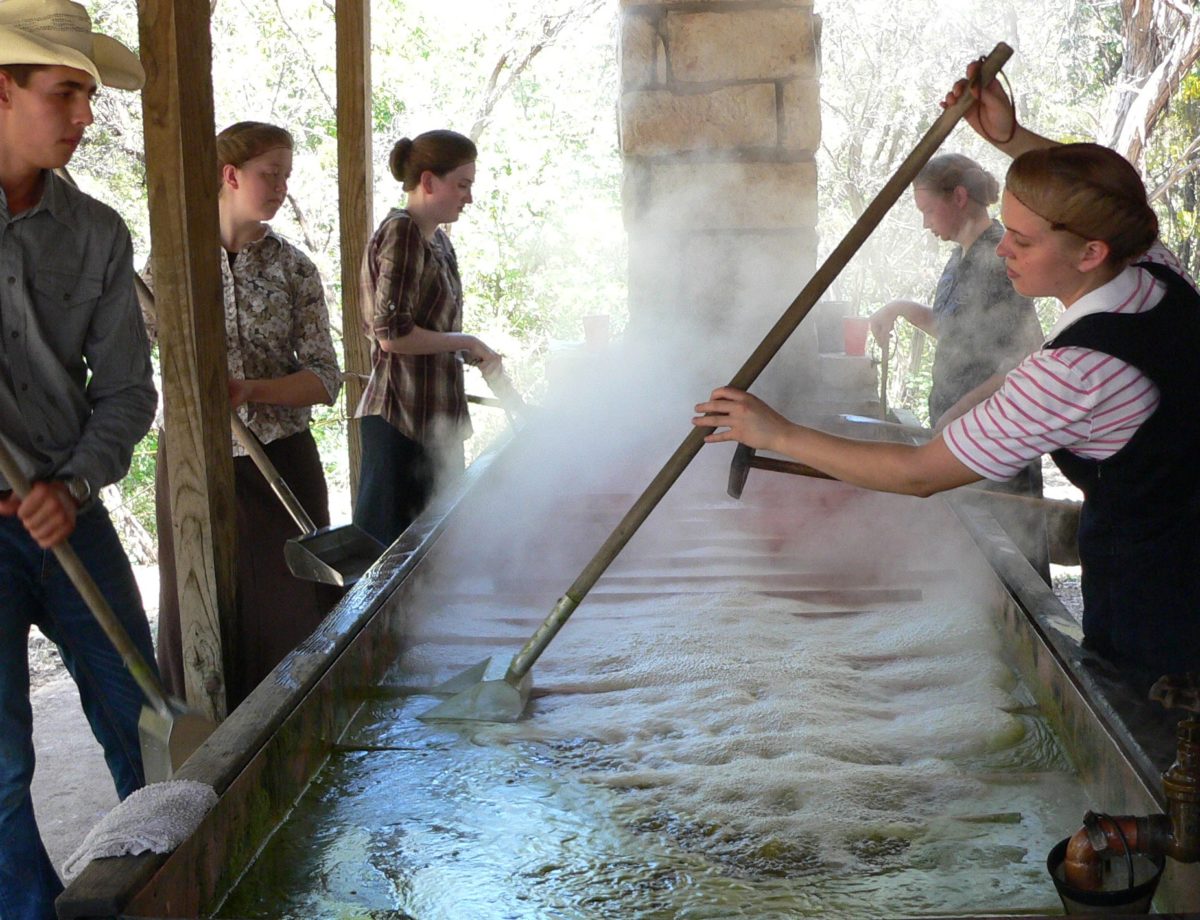
Inside the sorghum house, the finished sorghum syrup flows from the copper wood-fired cooking tray through cheese cloth. After filtering the syrup multiple times through cheesecloth and skimming off the foam, we bottle it up into jars.
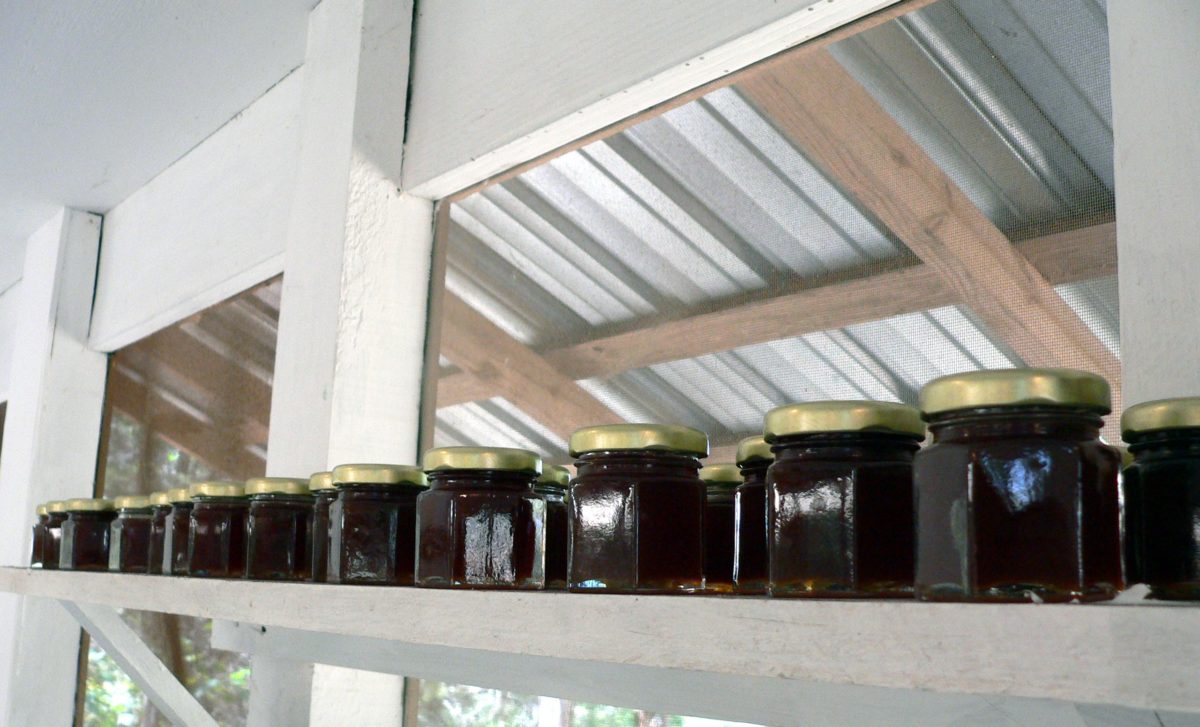
Sustainability Seminars
Meanwhile in the LaRue barn, The Ploughshare gave two seminars, one on sustainable gardening and a second on beekeeping. Both seminars were very informative and very well-attended.
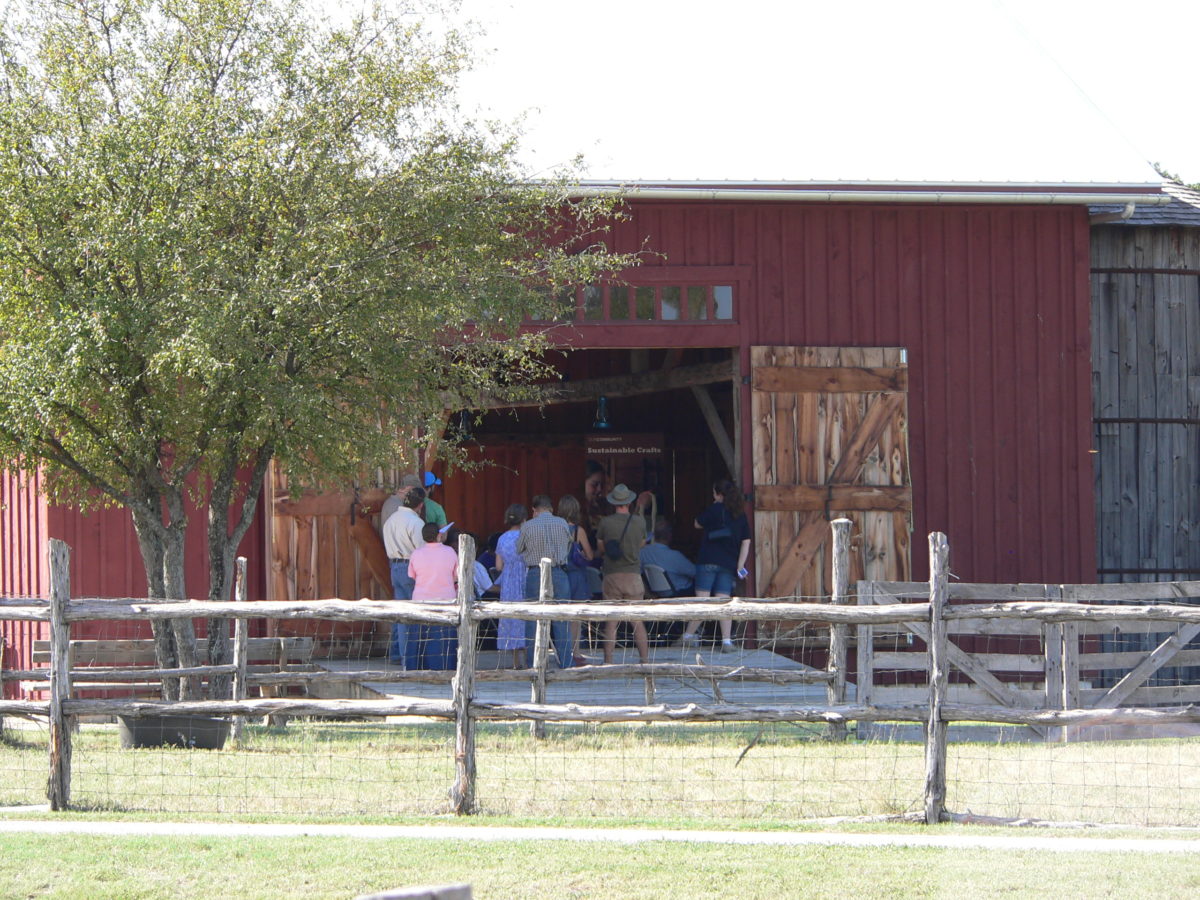
Grinding Blue Corn
Year-round, we grind wheat and other grains in our gristmill. In addition to this, Joe Claborn set up a portable mill for grinding cornmeal and demonstrated how it worked. This portable mill is powered by a single-cylinder “hit-or-miss” engine. The engine uses a centrifugal mechanical governor, which adjusts how often the engine fires in order to keep a nearly constant speed (rpm) whether the engine is under load or idling. Ground corn is fed into a sifter that uses two screens to separate the corn into fine cornmeal (for making cornbread), coarse cornmeal (for making grits) and chaff.
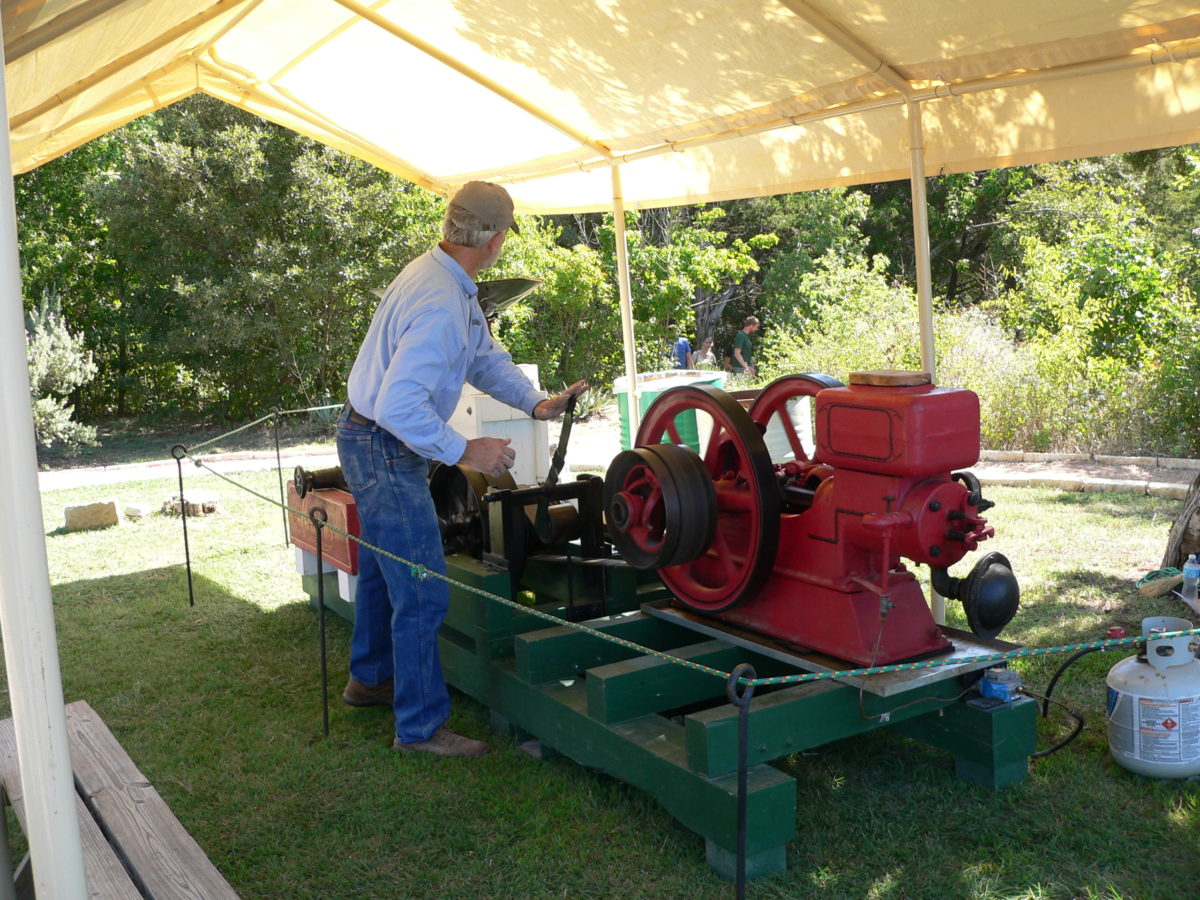
Kiln Opening Sale
As we’ve discussed previously, we recently finished building a wood-fired pottery kiln. Our potters had their first “Kiln Opening Sale” today with lots of beautiful pottery. (We hope to have more kiln opening sales in the future. If you would like more information about them, please give us a call at 254-754-9600 or leave a comment below.)
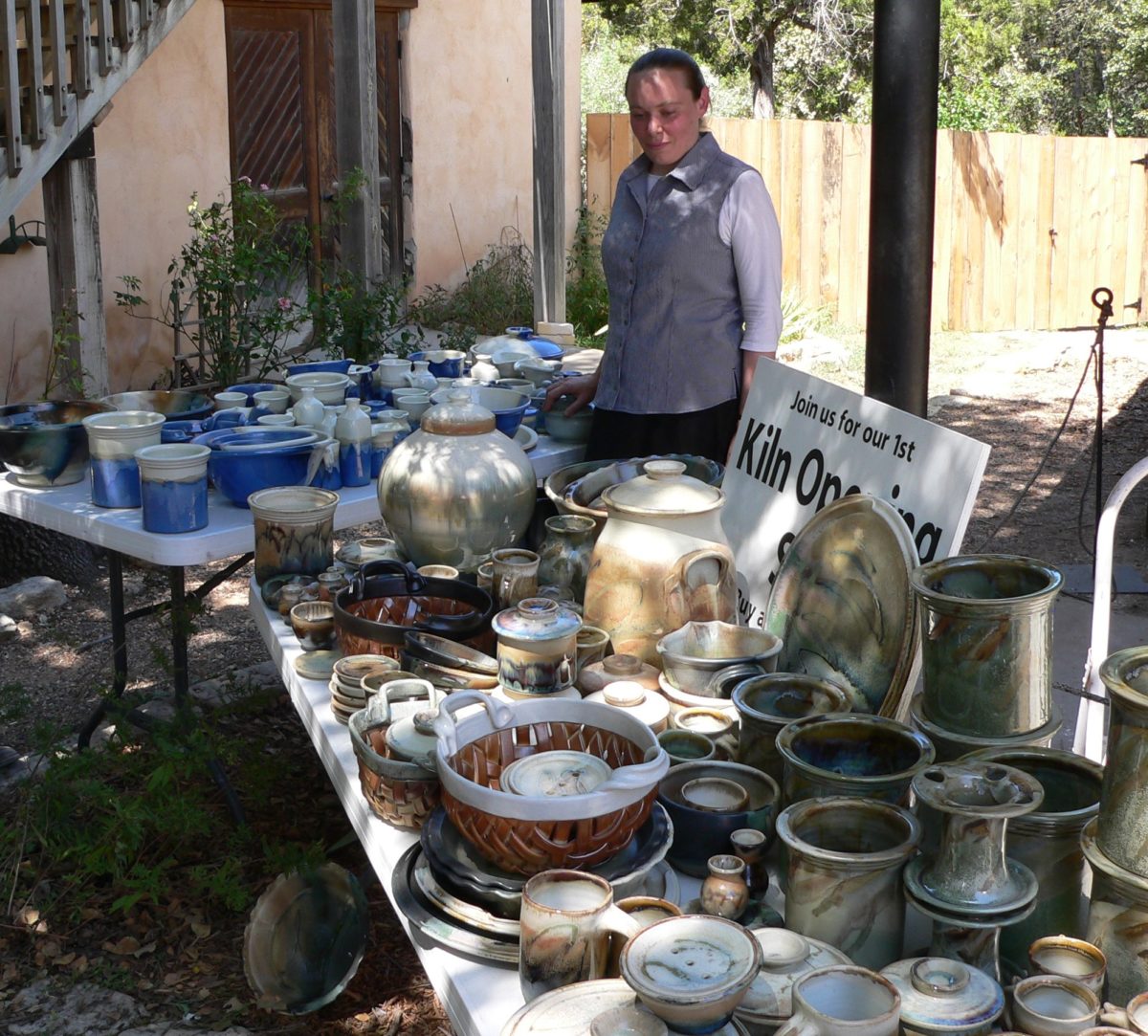
Fiber Crafts
In our fiber crafts shop, there was a lot of activity. One spinner was using a conventional flyer wheel to spin cotton, which we had grown on our farm, into yarn. She intends to weave her cotton yarn into cloth, then sew it into a garment.
Several other people were spinning cotton on tahklis. The tahkli is a small supported spindle (similar to a drop spindle, except that you support it rather than drop it) that works well for spinning cotton. Tahklis are inexpensive and very portable, and someone with experience can spin on the tahkli nearly as fast and as effectively as someone spinning at a wheel.
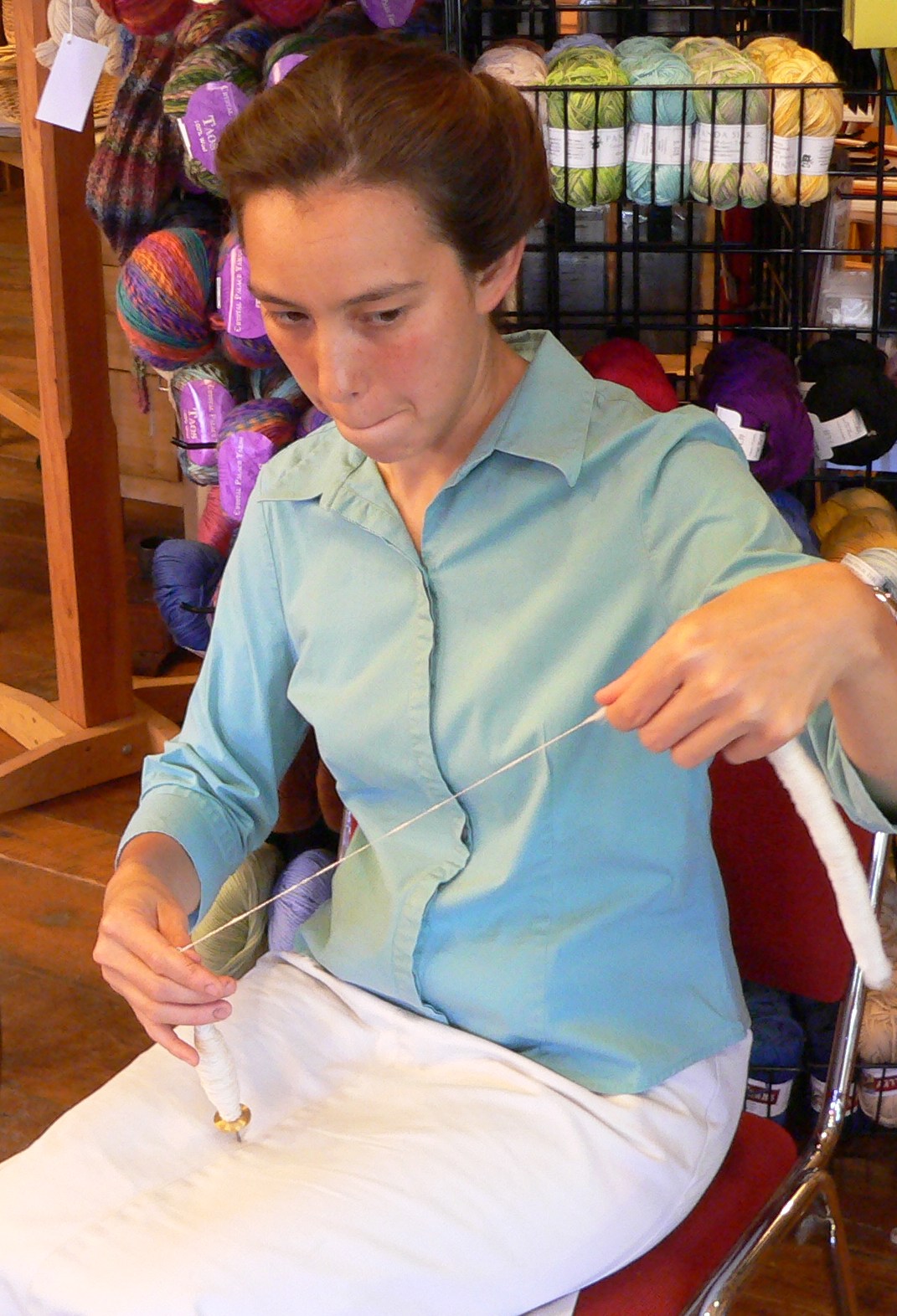
Make-Your-Own Crafts
Many children (and parents/grandparents along with them) enjoyed our make-your-own crafts. Children hammered out brass spoons. They also wove coasters, shaped clay “pinch pots” and built toy boats. I particularly enjoyed seeing the faces of the children using spokeshaves to carve wooden spatulas for the kitchen.
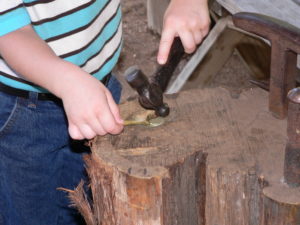
Thank You
Thank you for coming out and enjoying the day with us.
Questions
As always, if you have questions about our crafts, seminars or other activities, we would like to hear from you. You can leave us a comment here, or call us at 254-754-9600.
